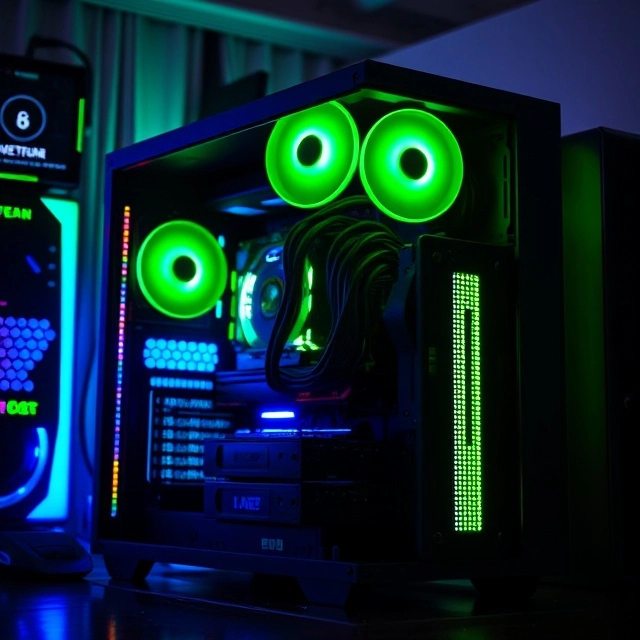Introduction
Building or upgrading a gaming PC can be exciting, but it often comes with a lot of technical questions. Two essential tools that help gamers make smarter hardware decisions are the Bottleneck Rechner and the FPS Rechner. These tools analyze your PC components to help you predict performance and identify weak spots before you spend money. This article explores what these tools are, why they are important, and how to use them effectively for the best gaming experience.
1. Understanding the Concept of Bottlenecking
Before diving into the tools, it's essential to understand the term bottlenecking. In computing, a bottleneck occurs when one component of the system limits the performance of the other components. This can happen in various ways:
-
CPU Bottleneck: The processor cannot keep up with the graphics card, resulting in lower frame rates even if the GPU is powerful.
-
GPU Bottleneck: The graphics card is weaker than the CPU, which causes the CPU to sit idle while waiting for the GPU to render frames.
-
RAM or Storage Bottleneck: Insufficient memory or slow storage can also impact system performance, especially in open-world games or multitasking scenarios.
Bottlenecking does not mean your system is broken—it simply indicates an imbalance in performance between different parts. Knowing where the bottleneck occurs helps you upgrade intelligently rather than wasting money on unnecessary components.
2. What Is a Bottleneck Rechner?
The term “Bottleneck Rechner” is German for “Bottleneck Calculator.” A Bottleneck Rechner is an online tool that evaluates your system’s CPU and GPU combination to determine potential performance limitations. These tools typically work by comparing the relative processing power of your CPU and GPU using benchmarks, databases, and algorithms.
Key Features of Bottleneck Rechner Tools:
-
Component Comparison: Users input their CPU and GPU models, and the calculator provides an estimated bottleneck percentage.
-
Realistic Benchmarks: Many tools use data from popular games to estimate performance more accurately.
-
Upgrade Suggestions: Some calculators recommend which component to upgrade for better balance.
-
Ease of Use: Even beginners can get quick results without deep technical knowledge.
For example, if you enter a high-end GPU with a mid-range CPU, the tool might tell you that your CPU is likely to cause a 20% bottleneck, meaning it could limit the GPU’s performance in demanding games.
3. Why Bottleneck Calculators Are Important
Bottleneck calculators serve several useful purposes:
-
Cost Efficiency: They prevent you from buying unnecessarily expensive components that your system can’t fully utilize.
-
Balanced Systems: They help create a balanced build where the CPU and GPU work efficiently together.
-
Upgrade Planning: If you’re upgrading only one component, these tools help you see whether your other parts can support it.
-
Performance Predictions: Gamers can anticipate how well their system will run upcoming games and make adjustments in advance.
For instance, a gamer upgrading from a GTX 1060 to an RTX 4080 might use a Bottleneck Rechner and find that their older i5 CPU will severely bottleneck the new GPU. This information can save them from disappointment and wasted money.
4. What Is an FPS Rechner?
“FPS Rechner” translates to “FPS Calculator.” FPS stands for Frames Per Second, which measures how smoothly a game runs on your system. An FPS Rechner estimates the expected frame rate you can achieve in specific games with your hardware setup.
How FPS Calculators Work:
-
Hardware Input: Users provide details such as CPU, GPU, RAM, and sometimes resolution settings.
-
Game Selection: Many tools let you pick from a list of popular games to get game-specific results.
-
Resolution and Settings: You can select low, medium, high, or ultra graphics settings along with 1080p, 1440p, or 4K resolutions.
-
Estimated FPS Output: The calculator then uses real benchmark data to estimate how many frames per second your setup will likely produce.
For example, if you input an RTX 3070 and Ryzen 5 5600X at 1080p Ultra settings for Cyberpunk 2077, the FPS Rechner might estimate around 75–85 FPS. This gives you a realistic expectation before actually playing or purchasing the game.
5. Benefits of Using FPS Calculators
FPS calculators offer several advantages for gamers:
-
Performance Forecasting: Get an idea of how a new game will run before buying it.
-
Resolution Decisions: Understand whether your system can handle higher resolutions like 1440p or 4K.
-
Upgrade Justification: See the potential FPS gains from upgrading specific components.
-
Game Optimization: Helps tweak in-game settings for the perfect balance between visuals and performance.
In short, FPS Rechner tools take the guesswork out of performance predictions.
6. How to Use Bottleneck and FPS Rechner Together
Using these two tools together provides the most accurate picture of your system's capabilities.
Step-by-Step Guide:
-
Start with Bottleneck Rechner:
Enter your CPU and GPU details to see if there is a major performance imbalance. -
Analyze the Bottleneck Report:
If there is a significant CPU bottleneck, upgrading the GPU may not improve FPS. Likewise, if the GPU is the weak point, a CPU upgrade alone won't yield big improvements. -
Move to FPS Rechner:
With your current or planned configuration, estimate the expected FPS in the games you play most. -
Compare Results:
If the FPS is lower than expected and the bottleneck calculator shows a CPU bottleneck, then you know the CPU is the limiting factor. -
Plan Upgrades:
Use both reports to decide which component should be upgraded first for the most cost-effective performance boost.
7. Limitations of These Tools
While Bottleneck and FPS calculators are useful, they are not perfect:
-
Estimates Only: Real-world performance can vary based on drivers, cooling, background apps, and specific game updates.
-
Game Optimization Differences: Some games rely heavily on the CPU, others on the GPU. Calculators may not perfectly reflect these nuances.
-
Overclocking and Settings: These tools often assume stock settings, not accounting for manual overclocking or advanced tweaks.
Therefore, treat these calculators as guidelines, not absolute predictions.
8. Best Practices for Accurate Results
To get the most reliable insights from Bottleneck Rechner and FPS Rechner, follow these tips:
-
Use Accurate Component Names: Include exact model numbers for CPUs and GPUs.
-
Select the Right Resolution: Choose the resolution and settings you actually plan to use.
-
Cross-Check Multiple Tools: Using more than one calculator can give a more rounded estimate.
-
Stay Updated: Hardware performance changes with driver updates and new game patches, so revisit these tools periodically.
Conclusion
Bottleneck Rechner and FPS Rechner are powerful resources for anyone building, upgrading, or fine-tuning a gaming PC. By identifying weak links in your setup and predicting frame rates, these tools save both time and money while helping you build a well-balanced system. Whether you are a casual gamer or a dedicated enthusiast, understand how these calculators work can dramatically improve your PC gaming experience.
For more information .



